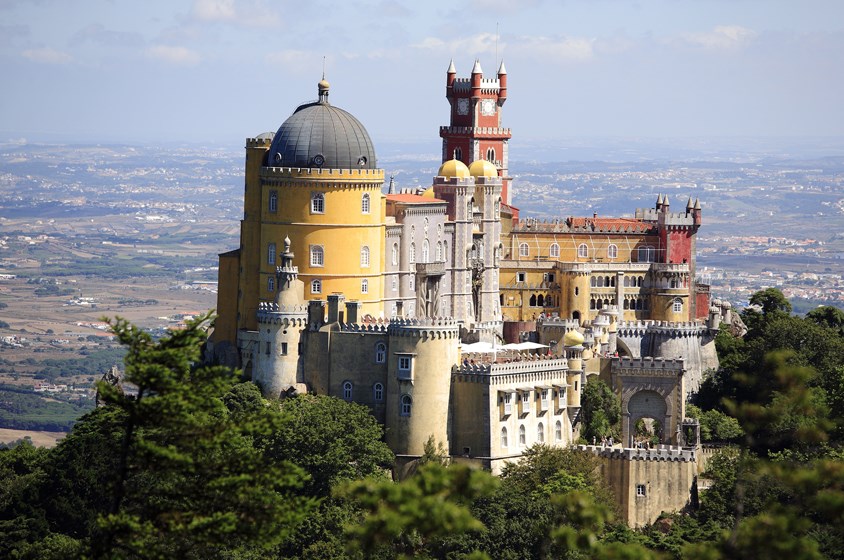On the second day of our trip to Portugal, we headed to the Portuguese city of Sintra, a historically rich city filled with archaeological sites and world heritage. It was founded in 1850 and boasts stunning natural landscapes, which made it a preferred residence for kings and princes.
We had a meeting at the local government headquarters, where we met the Mayor of the city, Dr. Basílio Horta. He spoke to us about the city’s roots, emphasized by the United Nations listing it as a World Heritage site. He also expressed his desire to twin the city with Abu Dhabi to establish tourism, cultural, and heritage relations between the two sides.
He pointed out the tourism development plans in the city, referred to by the Portuguese as the “Pearl of Portugal.”
After the meeting, we started a tour of the city, where numerous castles and palaces are scattered. The most significant is the “Palace of Monserrate.”
Honestly, Sintra is a captivating city not far from Lisbon, located on the west coast of Portugal. It is renowned for its well-maintained architecture and historical landmarks, earning it a place on UNESCO’s list of World Heritage sites.
The city is near the Sintra mountain range, attracting many visitors who come from the capital to see the five palaces here, in addition to the “Moorish Castle,” dating back to the ninth century. This fortress with Islamic origins experienced many attacks and sieges during the Middle Ages.
Mayor Dr. Basílio Horta said, “Portugal attracts large numbers of tourists annually due to its moderate climate, especially in Sintra, which is about 18 kilometers east of the Atlantic Ocean. Therefore, the former Portuguese kings chose it as their summer residence and built the colorful and uniquely designed “Pena Palace” as if they would live forever in this palace.”
“Pena Palace” is one of the most important historical and tourist landmarks in Portugal. Thanks to its legendary exterior designs, it is a tourist attraction in the Sintra Mountains, located about 30 kilometers northwest of the capital, Lisbon. The Romans named this mountain range, which reaches an elevation of 529 meters, “Monte da Lua” (Mountain of the Moon). It extends to the Atlantic Ocean, and one of its branches reaches the “Cabo da Roca” area, considered the westernmost point in Europe.
The tour guide took us to a square room inside the palace with an octagonal dome. He said, “The dome rises three times the supporting walls, covered with old blue tiles. Above that, there are 72 badges for the nobility, indicating the ruling families during the 16th century.”
Then, the path appears steeply sloping and paved with stones to the “Castelo dos Mouros,” or the Castle of the Moors, built in the eighth century. The Portuguese were unable to breach it until 1147. The ruins of the castle are still in good condition, and tourists can enter through the serrated balconies walls, but only if they don’t suffer from dizziness and altitude sickness.

